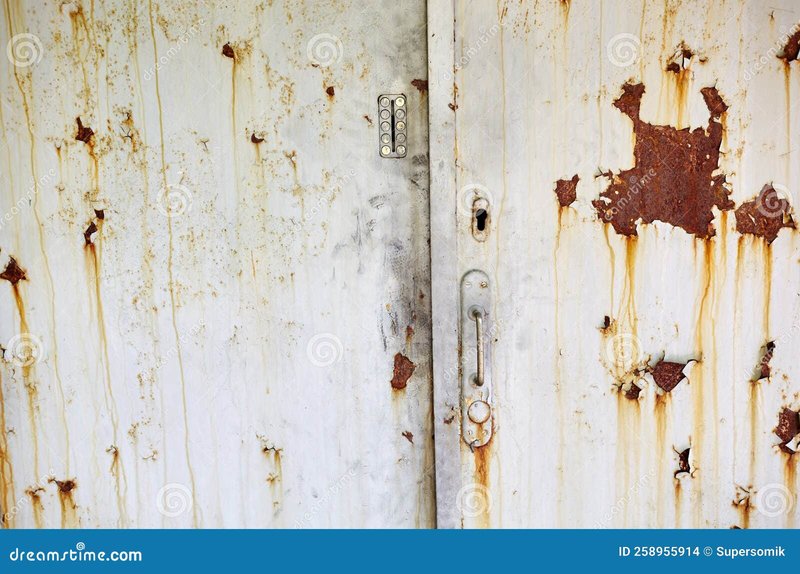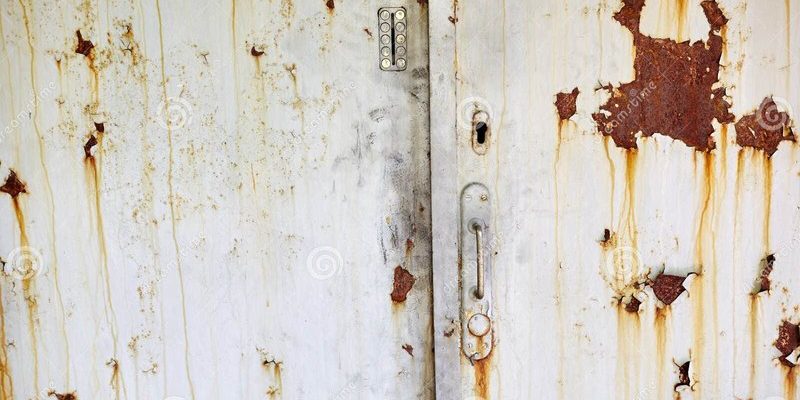
Here’s the thing: steel door handlesets are built to last, but they’re not invincible. Even top brands use a mix of metals and finishes that sometimes don’t play nicely with real-world conditions. Moisture, air, and time can all work together—sneakily—on the inside of that handleset, causing rust. Let me explain how (and why) this happens, what to do about it, and how to keep your handleset looking great for years to come.
What Causes Internal Rust on Steel Door Handlesets?
Most people expect rust to show up on the outside of their steel door handleset, where it’s exposed to the weather. But the inside parts—the spot where you grip the handle, the lock housing, or the bolt mechanism—can rust, too. Usually, it’s a simple combo of moisture, metal, and air that does the trick. Moisture sneaks in through gaps or cracks, even if you don’t see any obvious leaks. Sometimes, humidity in your home is all it takes. Add in a couple of rainy days or a steamy bathroom near the door, and suddenly, there’s enough water vapor trapped inside to start the rust process.
Steel is strong but not immune to rust. It’s mostly iron, and iron loves to react with oxygen when water is around. That classic reddish-brown color is iron oxide—rust—forming from just a little bit of moisture hanging around in the wrong place. Even the best powder-coated or stainless handles can show rust spots if water gets under the finish, or if cheaper internal parts aren’t treated to resist corrosion.
You might be wondering if your daily habits are making it worse. Honestly? Sometimes, it’s just poor luck or a humid season. But hands wet from rain, cleaning sprays that get into the mechanism, or even condensation from temperature swings can all help rust get started internally.
Why Don’t All Steel Door Handlesets Rust Internally?
It’s easy to think that all steel handlesets should rust at the same rate, but they definitely don’t. The difference often comes down to quality, materials, and how the brand puts everything together. Some designs use pure stainless steel for every single part—even hidden ones. Others (especially budget models) use a steel “shell” for the outside but sneak in cheaper metals or untreated steel inside where it’s harder to see.
Let me explain with a real-life example. Imagine two front doors in similar houses. One is fitted with a premium Emtek or Baldwin handleset: inside and out, it’s stainless, sealed, and the finish is flawless. The other uses a more basic steel handleset from a no-name brand. It looks nice on the outside, but inside, the bolt, screws, or springs might be plain steel or even iron. When moisture gets in, those hidden parts start to rust even if the outside looks okay at first.
Here’s the thing—manufacturers sometimes have to strike a balance between cost and quality. If you’re seeing rust inside only, it could mean the *exterior* finish is holding up, but the inner components aren’t as well protected. It’s not always your fault, but knowing the differences helps you understand what you’re working with.
How Moisture Gets Inside a Steel Handleset
You might be picturing water pouring right into your lock every time it rains, but it’s usually way less dramatic. Here’s how moisture finds its way inside:
- Tiny air gaps or loose screws around the mounting plate give water vapor a path in, especially on humid days.
- Condensation inside the door can occur when there’s a big difference between outdoor and indoor temperature, like on a cold winter morning when the warm air inside meets the chilly hardware.
- Everyday use—wet hands, cleaners, or even a quick spray from the garden hose can push a little bit of moisture into seams or keyholes if you’re not careful.
Over time, that moisture collects right where you least want it: inside the latch mechanism or in corners where air doesn’t flow well. That’s why you sometimes see rusty streaks bleeding out from the screw holes or around the inside edges—dark, damp spots where water just sits and works away at the metal.
One more thing—if you notice a draft or wiggly lock, that’s another sign water might be slipping past the seals or gaskets. In those cases, fixing the fit or seal can help cut down on future rust.
The Role of Finish and Coating on Rust Formation
Not all finishes are created equal, and the difference can be night and day when it comes to rust. Some handlesets have powder coatings that act like a tough raincoat, keeping moisture from ever touching the steel. Others use thin electroplated layers that look shiny but can chip or scratch, letting water sneak in. If your handleset’s finish is wearing off around the edges or especially at joints, you’re more likely to see rust spots inside.
Think of it like having a good raincoat versus an old sweater. The raincoat keeps water out; the sweater just soaks it up. Handlesets from brands like Schlage or Emtek usually have better, thicker coatings, but even those can wear out in high-traffic entryways. When the coating goes, water has a straight path to the steel underneath.
Pro tip: If you see discoloring, flaking, or pitting on the finish, that’s a clue the protective layer has failed in that area. The internal rust might be starting from that exact spot and spreading inside where you can’t see it—at least, not until it seeps out.
Is Internal Rust Dangerous or Just Ugly?
When you spot rust inside your handleset, it’s natural to wonder if it’s just a cosmetic thing or if your security is at risk. Here’s the honest answer: a bit of surface rust is mostly ugly, but if it’s spreading to the latch, locking mechanism, or screws, it can get serious.
Light rust—think small, powdery spots—usually doesn’t stop your lock from working. It just looks bad. But if that rust starts eating away at moving parts or fasteners, you might notice things getting sticky, jammed, or even impossible to lock or unlock. It’s not the kind of problem you want showing up the day you’re late for work.
If your lock starts feeling gritty, sticky, or you see rust on the bolt or latch, it’s time to take action. A rusty lock loses its strength, and you don’t want your front door to be the “weak point” burglars look for.
And here’s something a lot of people miss—internal rust can also mean the handleset won’t hold up as well in a fire or emergency, when you might need to get out in a hurry. It can weaken the spring tension or make it hard to turn the knob. So yes, this is more than just a looks issue.
How to Fix Rust Spots Inside Your Handleset
If you’ve caught the rust early, you might be able to stop it in its tracks. Here’s what I’d suggest, step-by-step:
- Take the handleset apart—most steel handlesets can be removed from the door with a screwdriver. Be gentle and keep track of each part as you go.
- Wipe away loose rust using a soft cloth or a small wire brush. Don’t go crazy—scratching too hard can damage the finish or expose more bare metal.
- Treat with a rust converter or WD-40. These products convert rust to a black, stable compound or protect it from more moisture. Only use a tiny bit and make sure it doesn’t drip onto surrounding areas.
- Dry everything completely before reassembling. If you spot moisture inside the door hole itself, leave it open to air out for a day.
- Consider touching up the finish with a bit of clear nail polish or matching enamel paint on hidden parts for extra protection. (Don’t use regular paint on moving parts; it can gum up the works.)
After cleaning, you can also lubricate moving parts with a silicone spray—never use oil-based products, as they can attract dirt and actually make things worse. If the rust has really eaten away at springs, screws, or the latch, it might be time to replace those parts or the entire handleset.
Tips to Prevent Internal Rust on Steel Handlesets
Stopping rust before it starts is the dream, right? Here are a few tips I share with friends and customers all the time:
- Keep your door and handleset dry—wipe off rain, snow, or condensation quickly. A soft cloth does the trick.
- Seal air leaks around the door and handleset (use weatherstripping or foam gaskets) to keep moist air from collecting inside.
- Clean gently—use a mild soap and water (never bleach or ammonia), and avoid letting cleaning sprays drip into cracks and keyholes.
- Check the finish every few months. If you notice scratches or thin spots, touch them up with a clear sealer or ask your local hardware store for advice.
- Use desiccant packs (like those little silica gel bags from packaging) inside hollow doors for an extra moisture defense if you live in a humid area.
And here’s a secret: a quick spritz of silicone spray in the latch or lock mechanism once a year can do wonders for repelling water and keeping things running smoothly.
Comparing Steel Handlesets to Alternative Materials
You might be wondering if you should just ditch steel and get a different kind of handleset. There are pros and cons to each:
- Brass—Resists rust better than steel, but can tarnish and needs polishing to stay shiny.
- Aluminum—Lightweight and won’t rust, but not as strong or secure as steel.
- Stainless steel—Best of both worlds if you can swing the price; resists rust and looks good longer.
- Zinc alloys—Used in a lot of budget handlesets; can corrode, but not the same reddish rust as steel.
If you love the strength and security of steel, just pay a little more upfront for a brand that uses rust-proof inner parts and a high-quality finish. If you’re in a super-humid place or want low maintenance, stainless or brass might be worth the investment.
When to Replace Your Rusty Handleset
There’s only so much you can do with a handleset that’s already far gone. If you see big flakes of rust, pitting, weak springs, or the lock is stuck, it’s probably time to say goodbye. Upgrading to a new model with sealed, rust-resistant internal workings will save you future headaches—and keep your door secure.
On the other hand, if the rust is minor and the handleset still feels solid, a good cleaning and some preventive care could buy you a few more years. Just don’t ignore ongoing trouble. Once rust starts spreading inside, it rarely just stops on its own.
Final Thoughts on Internal Rust in Steel Door Handlesets
Living with steel handlesets means staying just a step ahead of rust—especially inside, where it’s easy to forget about until it’s too late. Taking a few minutes every now and then to check for internal rust, keep things dry, and tidy up minor spots will go a long way. And if you’re in the market for a replacement, a little research goes a long way—pick a model with top-notch coatings and rust-proof internal parts.
In the end, a little TLC means your steel handleset can stay sturdy, stylish, and secure. If you spot those pesky rust spots inside, don’t stress—just clean, protect, and stay vigilant. Your door (and your peace of mind) will thank you.
